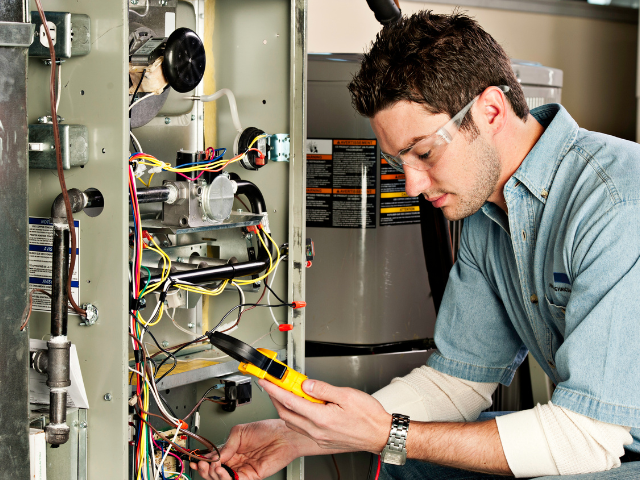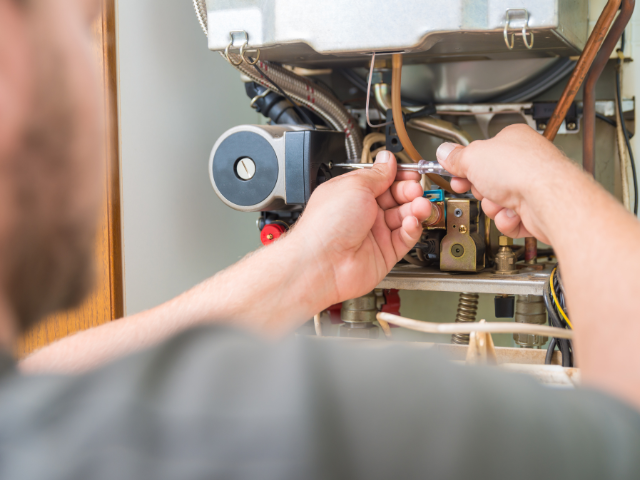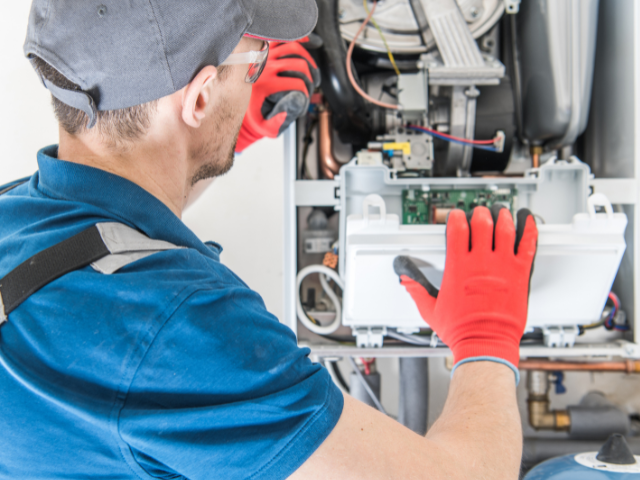Table of Contents
As winter’s chill sets in, your furnace becomes the heart of your home’s comfort. However, neglecting a vital step like furnace filter replacement winter preparations can leave you battling poor heating efficiency and rising energy bills. A clean filter ensures your furnace runs smoothly, delivering cozy warmth and healthier air for your family. Ready to tackle the season with ease? Discover the simple steps to replace your furnace filter and keep your home toasty all winter long.
Why Furnace Filter Replacement Is Crucial
A furnace filter serves as the first line of defense for your heating system, trapping dust, allergens, and other airborne particles. Over time, these filters can become clogged, leading to:
- Reduced airflow and heating efficiency.
- Increased energy bills due to overworking the furnace.
- Poor indoor air quality.
- Potential damage to the furnace system.
By replacing your furnace filter regularly, you ensure optimal performance and extend the life of your heating system.
How to Identify When Your Furnace Filter Needs Replacement

Recognizing the signs of a dirty or clogged furnace filter is vital. Here are common indicators:
- Increased Dust in Your Home: If you notice a buildup of dust on furniture or around vents, your filter may not be functioning properly.
- Higher Energy Bills: A dirty filter forces your furnace to work harder, consuming more energy.
- Uneven Heating: Poor airflow can result in some rooms feeling colder than others.
- Filter Discoloration: A visibly dark or clogged filter is a clear sign it needs to be replaced.
- Short Cycling: If your furnace frequently turns on and off, it may be due to restricted airflow caused by a clogged filter.
Choosing the Right Furnace Filter
Furnace filters come in various types and sizes, and selecting the right one is crucial for your system’s efficiency. Consider the following:
1. Filter Type
- Fiberglass Filters: Affordable and disposable, suitable for basic filtration needs. These filters are typically effective at trapping larger particles like dust and debris, but they may not be as efficient at capturing smaller particles or allergens.
- Pleated Filters: Offer better filtration of allergens and dust. They are made of a denser material than fiberglass filters, capturing smaller particles and improving the overall air quality in your home. The pleats increase the surface area, allowing for better airflow and longer filter life.
HEPA Filters: Capture up to 99.97% of particles, ideal for homes with allergies or asthma. These high-efficiency filters are designed to trap microscopic particles like pollen, pet dander, and mold spores, making them an excellent choice for households needing superior air purification.

2. MERV Rating
The Minimum Efficiency Reporting Value (MERV) measures a filter’s effectiveness. For residential furnaces, a MERV rating between 8 and 13 is ideal, balancing efficiency and airflow. Filters with a higher MERV rating offer better filtration but may reduce airflow if your furnace is not designed to handle it.
3. Correct Dimensions
Check your furnace’s manual or the existing filter for dimensions. Using the wrong size filter can lead to inefficiencies or system damage. An incorrectly sized filter can cause air leaks or impede proper airflow, forcing your furnace to work harder, which could increase energy consumption and shorten the life of your system.
Step-by-Step Guide to Furnace Filter Replacement
Step 1: Turn Off the Furnace
Safety first! Switch off the furnace to prevent it from running while you replace the filter. This can be done via the thermostat or by turning off the power supply.
Step 2: Locate the Filter Compartment
The filter is usually located near the return air duct or the blower compartment. Consult your furnace’s manual if you’re unsure of the location.
Step 3: Remove the Old Filter
Slide out the old filter carefully to avoid releasing trapped dust into the air. Take note of the direction of the airflow arrows printed on the filter frame.
Step 4: Inspect and Clean the Area
Before inserting the new filter, check the compartment for dust or debris. Use a vacuum or a damp cloth to clean the area.
Step 5: Insert the New Filter
Align the new filter with the airflow arrows pointing in the correct direction. Slide it into place, ensuring it fits snugly.
Step 6: Turn the Furnace Back On
Restore power to the furnace and run a quick test to ensure everything is functioning smoothly.
How Often Should You Replace Your Furnace Filter?
The frequency of replacement depends on various factors, including:
- Filter Type: Fiberglass filters typically need replacement every 30 days, while pleated filters can last up to 90 days.
- Household Size: Homes with pets or multiple occupants may require more frequent changes.
- Allergy Concerns: If you suffer from allergies, consider replacing filters more often for cleaner air.
As a general rule, inspect your filter monthly and replace it as needed.
Tips to Maintain Your Furnace for Winter
- Schedule Regular Inspections: Annual professional maintenance can identify issues before they become costly repairs.
- Seal Ductwork: Ensure there are no leaks to maintain consistent airflow.
- Use a Programmable Thermostat: Optimize your heating schedule to save energy and reduce strain on your furnace.
- Keep Vents Clear: Ensure furniture or rugs aren’t blocking air vents.
Benefits of Regular Furnace Maintenance
Routine furnace maintenance, including filter replacement, offers several advantages:
- Enhanced Efficiency: A clean filter ensures better airflow and heat distribution.
- Lower Energy Costs: Improved efficiency means less energy consumption.
- Improved Air Quality: Trapped dust and allergens are eliminated, creating a healthier home environment.
- Extended Furnace Lifespan: Preventing strain on the system reduces the likelihood of breakdowns.
Who Should I Call for Professional Furnace Maintenance and Repair Near Me?
When it comes to reliable furnace care, HVAC Alliance Expert is your go-to solution. Whether you need routine maintenance, emergency repairs, or advice on improving efficiency, our experts deliver top-notch HVAC services tailored to your needs. With years of experience and a commitment to excellence, we ensure your furnace operates smoothly all winter. Don’t leave your comfort to chance—contact us today for professional, hassle-free furnace maintenance and repair!

Conclusion
Stay cozy and worry-free this winter by prioritizing your furnace’s health. Regular furnace filter replacement not only enhances your system’s efficiency but also improves your home’s air quality and saves on energy bills. From simple DIY steps to expert maintenance, a little effort goes a long way in keeping your home warm and comfortable. For reliable furnace care, trust HVAC Alliance Expert to handle all your heating needs with precision. Don’t wait for chilly surprises—schedule your professional HVAC services today and embrace a stress-free, toasty winter season!
FAQs
It’s recommended to replace your furnace filter every 1-3 months depending on the type and household conditions. If you have pets or allergies, consider replacing it more frequently.
Yes, a dirty furnace filter can reduce airflow, causing your furnace to work harder and leading to higher energy bills. It can also strain the system, potentially causing damage.
Pleated filters or HEPA filters are ideal for winter, as they offer superior filtration for allergens and dust, ensuring cleaner air and efficient furnace performance. The correct filter type depends on your specific needs and system compatibility.
Signs that your furnace filter needs replacement include increased dust in your home, higher energy bills, and uneven heating. If the filter looks dark or clogged, it’s time to change it.
Yes, replacing your furnace filter is a simple task that most homeowners can do themselves. Follow the step-by-step guide provided to ensure the job is done correctly and safely.


